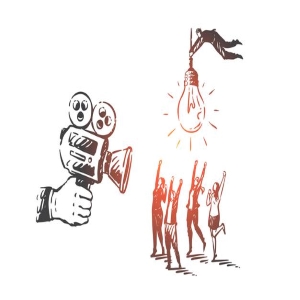 As we all know, the ad film industry has grown in size and complexity, and it takes a lot of talent to make an ad film, as it has been the primary source of branding for decades. In order to keep the vicinity, the ad films are completed in multiple steps based on their size and quality.
As we all know, the ad film industry has grown in size and complexity, and it takes a lot of talent to make an ad film, as it has been the primary source of branding for decades. In order to keep the vicinity, the ad films are completed in multiple steps based on their size and quality.
The steps of the ad film production process are outlined below:
Creative Brief & Development
In creative Briefing and development, everything is planned and outlined which has to be implemented in the next steps. In this process, the production team prepares thorough concept notes, budgets, and schedules. They also set the tone by agreeing on the style, budget, and timescales. The project’s commencement varies, but it usually starts with the production of a script, whether it’s an existing script, a book, or a brief story concept. A Director and/or Writer may also begin development by submitting an idea to a Producer.
Pre Production
This is the stage where you’ll nail down your production possibilities. It’s where all the planning happens before the camera starts rolling, and it’s where the project’s overall vision is established. Working out the shooting site and casting are also part of pre-production. To create the film’s schedule and budget, the Producer will hire a Line Manager or Production Manager. This is the stage of the production where a draught script is written and subsequently perfected, site scouting by the film crew is done, storyboards are created, clearances are obtained if necessary, shoot dates are set, and so on. Following that, a production schedule is created, which is a thorough work plan that includes timelines, shot lists, and other details.
Production
It’s critical to keep planning ahead of the daily shoot throughout this stage. The main goal is to stick to the budget and timeline, which necessitates continual monitoring. Communication is essential between all parties involved, including the location, set, office, production firm, and distributors.
Film Shoot
The camera begins to roll at this point. Due to actor, director, and set crew pay, as well as the price of certain shots, props, and on-set special effects, it is almost always the most expensive part of film production. Everything that has happened up to this point has been done in order to ensure that primary photography runs as smoothly and effectively as possible. During the shoot, all parties must communicate effectively, and the production must keep meticulous records in order to stay on schedule and on budget.
Wrapping
The period immediately following the completion of the shoot is over. It’s when the set is struck (dismantled) and the location is cleared. Everything must be returned to suppliers in good working order, and the shoot must have a complete set of records.
Post Production
This stage begins when principal photography concludes, however it is possible that they will overlap. The majority of post-production is evaluating the video and putting the movie together — editing. Visual effects (VFX), music, and sound design will all make contributions as needed. The image is now locked, and delivery elements are being created. Later in Week 1 of the course, you’ll find more information on Post Production.
Distribution
The film must be distributed once it has been completed. This is how producers recoup their investment, and it will take a significant amount of time and effort to get the best distribution partnerships for their productions. The film will be released in theatres and/or distributed through multiple channels such as Amazon Prime, Netflix, and HBO, among others.
So here are the fundamental stages, which are not yet complete but may be useful to you.

